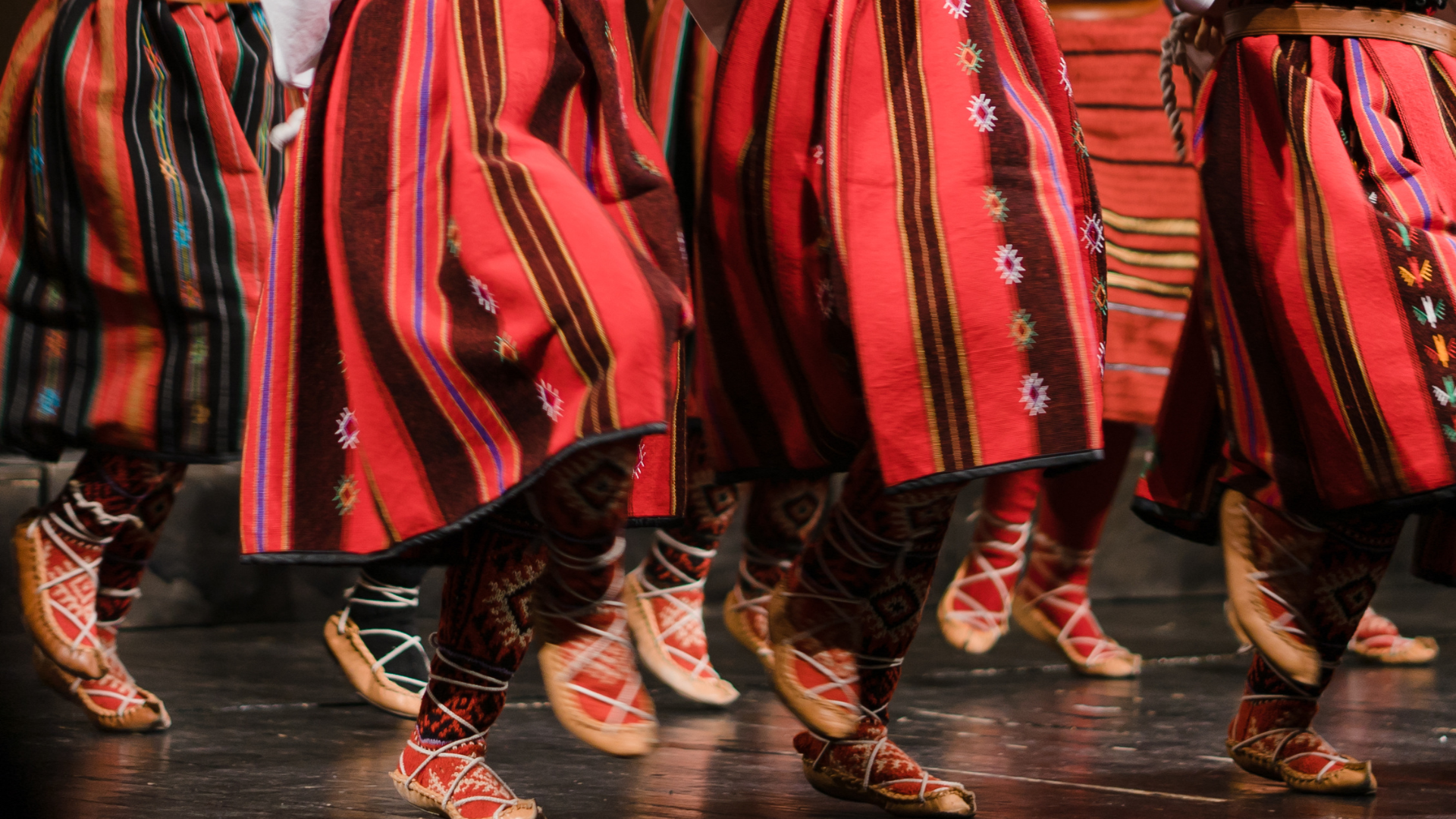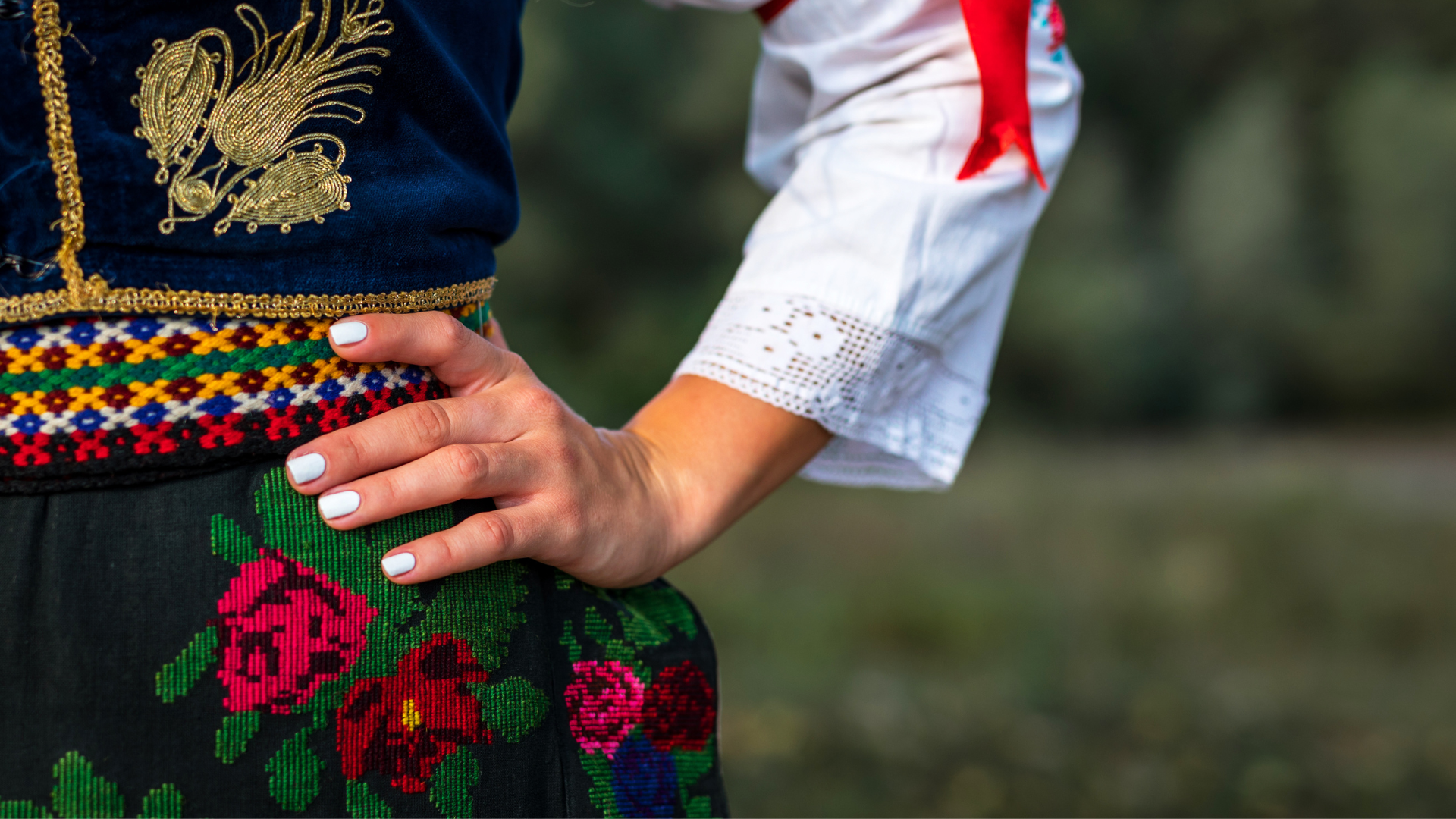Serbian soul in motion—there’s no better way to describe kolo, the traditional dance that pulses through the country’s villages, cities, and celebrations. More than just steps in rhythm, kolo is a living expression of community, identity, and shared joy. Rooted in every corner of Serbia, this iconic circle dance requires no partner; instead, dancers link hands in a continuous chain. The word kolo itself means “circle,” symbolizing unity, connection, and cultural continuity.
Performed at weddings, festivals, and important life events, kolo varies slightly across regions, yet the underlying spirit remains the same: movement in harmony with others. Unlike dances that spotlight individuals, kolo emphasizes collective rhythm and mutual energy. In recognition of its cultural significance, UNESCO inscribed kolo onto its Representative List of the Intangible Cultural Heritage of Humanity in 2017—a testament to its role as the heartbeat of Serbian tradition.
Folk Costume Elements & Musical Accompaniment
When performed formally, kolo comes to life in narodna nošnja (traditional dress), a visual celebration of Serbian identity. Men typically wear the šajkača (military-style cap) with a jelek (ornate vest) over a crisp white shirt. Women pair their embroidered vests with colorful blouses and the kecelja (apron), creating a striking contrast of textures and patterns. On their feet, dancers wear opanci (pointed leather shoes) and vunene čarape (woolen socks), designed for nimble footwork.
The soul of kolo also lives in its music. Traditional instruments like the accordion, frula (wooden flute), and tapan (large double-headed drum) set the pace, dictating the dance’s tempo and energy. The rhythm can shift from slow and lyrical to wild and thunderous, drawing dancers into a dynamic flow that mirrors the emotional spectrum of communal celebration.

Different Types of Kolo
The beauty of kolo lies in its variety. Each region brings its own flavor to the dance, offering different tempos, moods, and styles:
Moravac
Graceful and elegant, Moravac originates from the Morava River region. Its smooth pace and flowing movement make it a favorite for beginners and festive gatherings alike.
Užičko Kolo
This west Serbian variant is fast, fiery, and full of energy. Expect clapping, stomping, and rapid turns—Užičko kolo is as much a cardiovascular workout as it is a cultural performance.
Vlaško Kolo
Hailing from eastern Serbia and rooted in the traditions of the Vlach community, Vlaško kolo is playful and free-spirited. Dancers often inject personal flair, making each performance unique and improvisational.
Čačak Kolo
Named after the city of Čačak, this kolo is famously upbeat and physically demanding. Its fast footwork and lively character make it a crowd-pleaser at any traditional celebration.
How to Join In
Joining a kolo might seem intimidating, but it’s easier than it looks. Simply step into the circle, grab the hands of the people next to you, and follow the basic pattern—usually a 2-1-1 rhythm, moving left and right. Don’t worry about perfection. The spirit of kolo lies in participation, not precision.
Let yourself get swept up in the rhythm. The energy is contagious, and the crowd is usually welcoming. A splash of rakija (traditional Serbian brandy) might help dissolve any hesitation.
Where to Watch (and Learn) Kolo
Kolo is all around you in Serbia—especially if you know where to look. Weddings are a prime place to experience spontaneous kolos that invite everyone to join. For more polished performances, events like Zlatno Kolo in Bor or the world-famous Guča Trumpet Festival offer vibrant showcases.
Want to learn it yourself? Folklore schools, cultural centers, and even YouTube are great places to start. In Belgrade, community workshops are often held in cultural institutions where seasoned dancers are eager to share the steps.
Why Kolo Matters — and Why You Should Try It
In the end, kolo is the Serbian soul in motion—a dance that isn’t just seen, but deeply felt. It connects generations, weaves together strangers, and carries the weight of cultural memory in every step. Whether you’re dancing at a wedding in a mountain village or watching a troupe perform on stage in Belgrade, you’re witnessing something sacred and enduring.
So why not take the leap? If you want to feel Serbia—not just see it—step into the circle.
Stay in Belgrade and Step Into Tradition
To make your journey complete, stay at Best Western Premier Natalija Residence, a quiet gem in the heart of Belgrade. Here, modern comfort meets authentic experience—perfect after a day exploring Serbia’s rich traditions or trying your first kolo. Enjoy refined hospitality and unwind in style as you absorb the rhythm of this remarkable culture.

